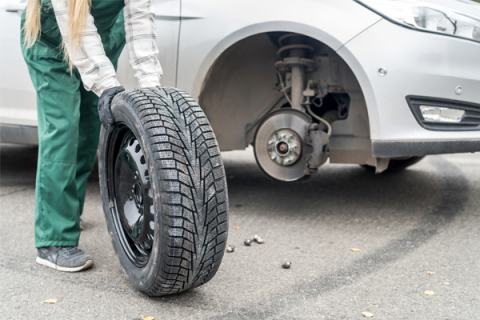
In case you’re asking why your gas mileage has appeared to be a little lower than ordinary recently, or why your steering appears to be a little sluggish when you’re in the driver’s seat, or even why your vehicle is by all accounts sitting nearer to the ground than normal; the answer lies in car tyre pressure check.
Having the right tyre pressure is critical for great mileage as it adds life to your tyres. Your vehicle has a suggested tyre pressure that will give the best gas mileage and enhance the tyre life. It’s composed right on the vehicle’s entryway. That is the one you ought to follow when topping them off with air to the suggested pressure, estimated in pounds per square inch or psi.
On brand-new vehicles, the tyre pressure is labelled on the driver’s doorway. If by any chance, there’s no sticker on the doorway, you can normally discover the specs in the manual. Most traveller vehicles will suggest 32 psi to 35 psi in the tyres when they’re cold. The explanation for checking tyre pressure when they’re cold is that as tyres move and rub on the road, it creates heat, expanding both the temperature and air pressure. For the most precise perusing, ensure the vehicle has been sitting for the time being or possibly has been left for a couple of hours to cool down.
Your Car tyre Tells A Lot About Car Air Pressure
Every driver or car owner needs to understand their car’s tyres. It is essential for the safety of everyone who is out on the road with their vehicle.
Tyre Damage
Cuts, breaks and scraped spots can infiltrate penetration into the inward texture of your vehicle tyre which can be perilous, even fit for causing high-velocity blow-outs. However, the entrance of the track by a nail or shard of glass or metal can be securely fixed.
Bald tyres
Bald tyres will lose constrain rapidly prompting diminished your vehicle’s fuel efficiency, slowing down issues and loss of control for the driver. Not only are bald tyres illegal, but it is also dangerous for other people on the road. Without the tread, tyres may face the danger of slipping even on a dry road. On wet roads, the driver can fail to keep a grip on the vehicle. The track designs are intended to channel water away from the tyre and the track depths help with the process. In the absence of the track designs, the tyres cannot adequately dislodge the surface water causing aquaplaning.
- Log in to post comments
